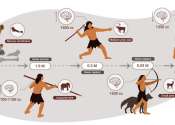How do pathogens learn to be pathogens: Partnerships between microbes leading to human disease
The microscopic world resembles our world in some surprising ways. The environment around us is inhabited by microbes living in complex communities—some friendly and some not so friendly. Microbes compete with each other ...









